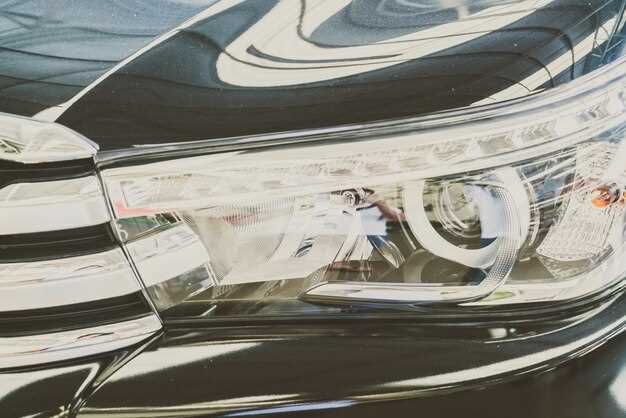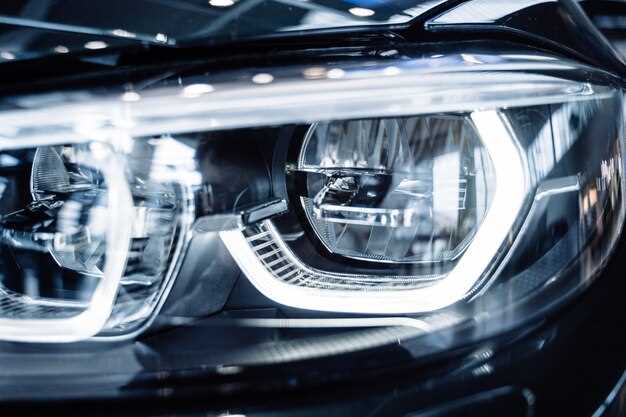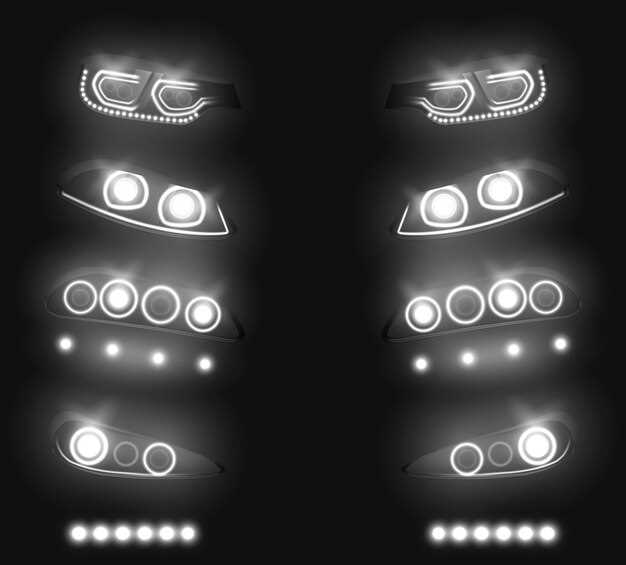Upgrading Jeep headlights – LED vs HID


When it comes to enhancing the driving experience of your Jeep, upgrading the lighting system can make a significant difference. The headlights are not only essential for visibility but also play a crucial role in safety during night driving or adverse weather conditions. Two popular upgrade options available for Jeep owners are LED and HID headlights. Each of these technologies offers distinct advantages and characteristics, making it vital to understand their differences before making a choice.
LED headlights are known for their energy efficiency and longevity. They provide a bright, white light that closely resembles natural daylight, enhancing visibility on the road. This type of lighting is also less taxing on the vehicle’s electrical system, meaning there is minimal impact on the battery life. On the other hand, HID (High-Intensity Discharge) headlights have gained popularity for their superb brightness and ability to illuminate a wider area, which can be particularly beneficial for off-road adventures. Both options offer improvements over traditional halogen bulbs, but the best choice ultimately depends on individual needs and driving conditions.
In this article, we will delve deeper into the features, advantages, and drawbacks of both LED and HID headlights. By understanding the core differences in lighting quality, installation requirements, and cost-effectiveness, Jeep owners can make an informed decision when considering a headlight upgrade. Whether you’re navigating dark trails or cruising down the highway, the right headlights can elevate your Jeep’s performance and safety.
Jeep Headlight Upgrade Guide: LED vs HID Comparison

When considering upgrades for your Jeep’s headlights, two popular options emerge: LED (Light Emitting Diode) and HID (High-Intensity Discharge) systems. Each has unique characteristics that cater to different driving environments and preferences, making it essential to understand the differences before making a decision.
LED headlights are renowned for their longevity and efficiency. With a lifespan of up to 25,000 hours, these lights consume less power, which can be beneficial for your vehicle’s electrical system. Additionally, LEDs provide instant illumination and a bright, white light that enhances visibility, especially during nighttime driving or inclement weather. They’re also more resistant to shocks and vibrations, making them an ideal choice for off-road adventures.
On the other hand, HID headlights provide intense brightness and a wide range of color temperatures, offering a rich, blue-white light that closely resembles natural daylight. This makes them particularly effective for those who frequently drive in dark or rural areas. HIDs typically outperform standard halogen bulbs in terms of light output, providing greater distance visibility. However, they generally have a shorter lifespan than LEDs, often around 2,000 to 3,000 hours, and may require additional components for proper installation.
Both lighting systems have their pros and cons. LED upgrades are highly efficient, durable, and require less maintenance, making them a popular choice among Jeep enthusiasts. In contrast, HID systems can deliver more powerful illumination and a distinctive appearance but may involve higher initial costs and installation complexity.
Ultimately, the choice between LED and HID will depend on your specific driving needs, budget, and aesthetic preferences. Assessing your typical driving conditions and the desired light output can help you make an informed decision for your Jeep’s headlight upgrades.
Advantages of LED Headlights for Jeep Owners

LED headlights offer a myriad of benefits for Jeep owners looking to upgrade their vehicles. Here are some key advantages:
- Energy Efficiency: LED lights consume significantly less power compared to traditional halogen or HID lights. This efficiency translates into better battery life and less strain on the vehicle’s electrical system.
- Longevity: LEDs have a lifespan that can exceed 25,000 hours, far surpassing the longevity of halogen and HID lights. This means fewer replacements and more extended periods of use before considering upgrades.
- Brightness and Visibility: LED headlights provide a brighter, whiter light, improving visibility in various driving conditions. The enhanced brightness can help Jeep owners spot obstacles and other vehicles more easily.
- Durability: Constructed from robust materials, LED headlights are more resistant to shocks and vibrations. This durability is especially beneficial for off-road enthusiasts who encounter rough terrains.
- Instant On/Off: LED technology allows for instant illumination without warm-up time, offering immediate visibility when turning on the headlights or switching between low and high beams.
- Design Flexibility: The compact size of LEDs allows for innovative headlight designs, providing Jeep owners with more styling options and customization possibilities for their vehicles.
- Less Heat Emission: LEDs emit very little heat compared to traditional bulbs, reducing the risk of overheating and damage to surrounding components.
- Environmentally Friendly: LED lights are free from harmful chemicals such as mercury, making them a more eco-conscious choice for upgrades.
These advantages make LED headlights an appealing option for Jeep owners seeking reliable and effective lighting solutions.
Installation Process for HID Headlights in Jeep Models
Installing HID headlights in your Jeep involves several precise steps to ensure optimal lighting performance and safety. Begin by gathering the necessary tools, including a ratchet set, socket extensions, and wire connectors. Make sure to purchase a high-quality HID conversion kit compatible with your specific Jeep model.
1. Preparation: Start by disconnecting the vehicle’s battery to avoid any electrical mishaps during the installation process. This is a crucial step to ensure safety while working with the electrical components of the lighting system.
2. Remove the Headlight Assembly: Access the headlight assembly by removing any screws or clips holding it in place. Carefully pull the assembly away from the Jeep, making sure not to damage any wiring or connectors attached to it.
3. Disconnect the Wiring Harness: Once the headlight assembly is free, locate the wiring harness connected to the existing halogen bulbs. Gently disconnect the harness to remove the old headlights. Take care not to tug on the wires, as this can lead to damage.
4. Install the HID Bulbs: Insert the new HID bulbs into the headlight assembly. Use a twisting motion to secure the bulbs in place. Ensure that they fit snugly to prevent any light leakage and to maximize the efficiency of the lighting.
5. Connect the Ballasts: Mount the HID ballasts in a suitable location within the engine bay, ensuring they are away from heat sources and moisture. Connect the wires from the ballasts to the HID bulbs, and then connect the ballasts to the existing wiring harness. It is essential to follow the wiring diagram provided in your HID kit closely.
6. Reinstall the Headlight Assembly: Carefully reposition the headlight assembly into its original place, ensuring that all clips and screws align correctly. Secure the assembly firmly, so the lights remain stable during driving.
7. Reconnect the Battery: With everything properly installed, reconnect the Jeep’s battery. This step reactivates the electrical system, allowing you to test the new HID headlights.
8. Test the Lights: Turn on your Jeep and check the functionality of the HID headlights. Make sure both high and low beams operate correctly. Adjust the beam alignment if necessary to ensure optimal lighting performance on the road.
By following these steps, you can successfully upgrade your Jeep’s lighting system with HID headlights, enhancing visibility and style while driving.
Cost Analysis: LED vs HID Headlight Upgrades
When considering headlight upgrades for your Jeep, understanding the costs associated with LED and HID options is crucial for making an informed decision. Both technologies have their own price points, installation expenses, and long-term value implications.
LED headlights generally have a higher initial purchase price compared to HID systems, often ranging from $100 to $300 per pair. However, their longevity is a significant factor; LED lights can last up to 25,000 hours, which translates to fewer replacements and potentially lower lifetime costs. Furthermore, some LED products offer plug-and-play installation kits, reducing installation expenses.
On the other hand, HID headlights tend to be less expensive upfront, typically priced between $50 to $150 per pair. While they produce brighter light and better visibility, their lifespan is generally shorter, averaging around 2,000 hours. This shorter lifespan could result in more frequent replacements, increasing long-term costs.
Additionally, consider the installation aspects. HID systems often require more complex wiring and possibly the installation of ballasts, which could incur extra labor costs. In contrast, if you opt for LED upgrades designed for easy installation, you may be able to carry out the upgrade yourself, saving on professional installation fees.
Ultimately, while LED headlights may present a higher initial investment, their longevity, energy efficiency, and simple installation could yield better value over time. Conversely, HID lights are a more economical choice upfront, but might lead to higher total costs due to shorter lifespans and potential installation complications. Evaluating your budget and long-term lighting needs will help guide your choice between these two excellent headlight upgrade options.
